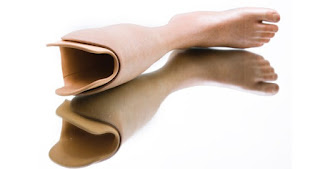Endovascular
coiling is a procedure is performed to hinder the flow of blood into an
aneurysm which is a weakened area in the wall of an artery. Recently, this
method is more frequently used in treating brain aneurysms and the process if
termed as Neuroendovascular Coil or aneurysm
coil embolization. The coiling method was first introduced in the 1990s as a
way of treating ruptured or unruptured aneurysms without the need for a
craniotomy, i.e., not having to have to open the head to expose the brain. Neuroendovascular
Coil is a minimal invasive technique in which the coiling is done using
a catheter and by approaching the aneurysm from within the blood vessel. During
this procedure, a catheter is passed through the groin or hip up into the
artery that contains the aneurysm, after which the platinum coils are released
(neuroendovascular coil). These metal coils stimulate clotting
(embolization) of the aneurysm and avoid the blood from getting into the bulge
and thereby lessen the risk of bleed or re-bleed. Eventually, the residual
blood inside the aneurysm clots around the coils and seals the weakened area.
The
risks associated with coiling:
A
surgeon will discuss all the probabilities before a patient gives a complete
consent for the procedure and it is quite likely that the advantages of coiling
will strongly preponderate any potential risks. Nevertheless, with any kind of
invasive procedure, there are certain risks associated with the process. The
probable and potential complications include stroke-related symptoms such as
numbness, weakness in the arms and/or legs, slurred speech, or vision-related
issues. Furthermore, there are risks of infection, bleeding or arterial damage
in the area where the catheter is inserted.
The
outcome of Neuroendovascular coil:
Market
analysis of Neuroendovascular coil states that prolonged success of
endovascular coiling in order to treat aneurysms is approximately 80 to 85%. A
recurrence happens when coils do not completely block off the aneurysm or when
the metal coils get compacted within the aneurysms. Neuroendovascular coiling
is gaining more popularity relatively to the conventional treatment of
surgically clipping the aneurysm due to the prevention of subarachnoid hemorrhage, which might
result in stroke, paralysis and even death.





















